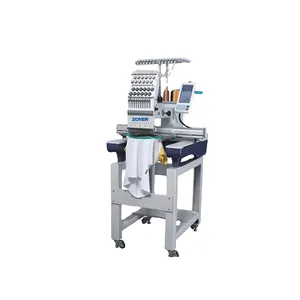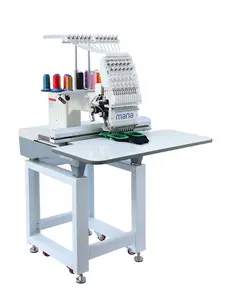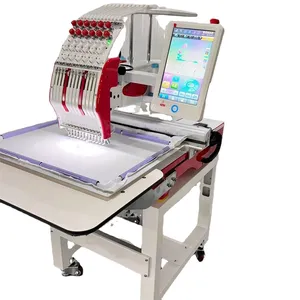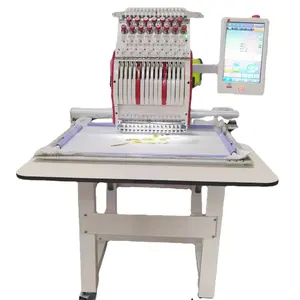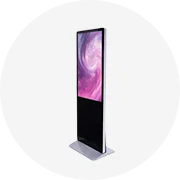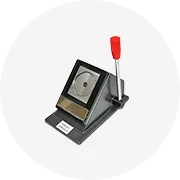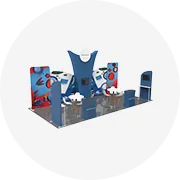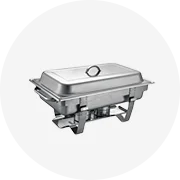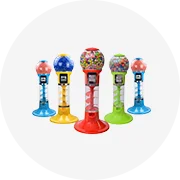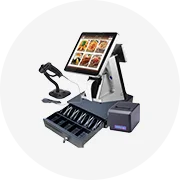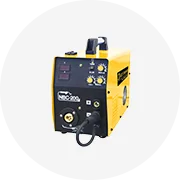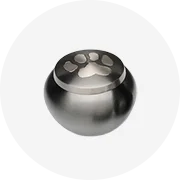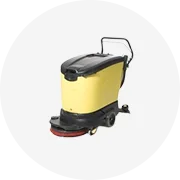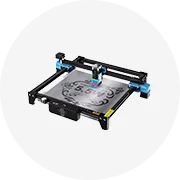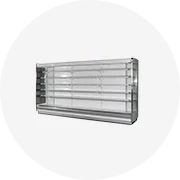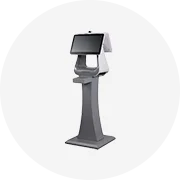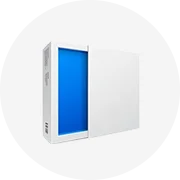Maya embroidery
(563 products available)



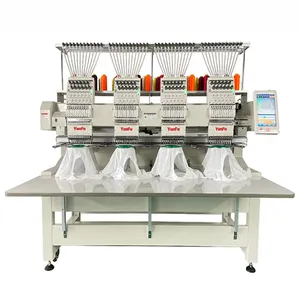


YUNFU Maya 4 Head Embroidery Machine Industrial Use Computerized 12/15 Needles 1200 Rmp Fast Speed Cheap Price






Computerized Maya 4 Heads Industrial Embroidery Machine Digital Computerized






MAYA AI Software of Embroidery Design Making Better Than Wilcom for Single Head Embroidery Machine






Yonthin Industrial Commercial Automatic Computer Maya 8 Head Embroidery Machine Computerized Sales Price






4 Head Feiya Computerized Tubular Embroidery Machine T Shirt and Flat Maya Embroidery Machine 9/12/15 Colors






New Arrival Single Head Embroidery Machine High-advanced Maya Embroidery Machine

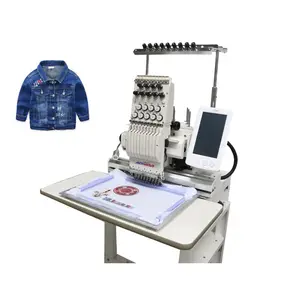




Single Heads QHM Computerized Embroidery Machine Is As Good As Maya Embroidery Machine
Popular in your industry






Holiauma Holihope Single Head Cap Computer Sewing Flat T-shirt Embroidery Machine with Maya Brand for Design Shop Industrial
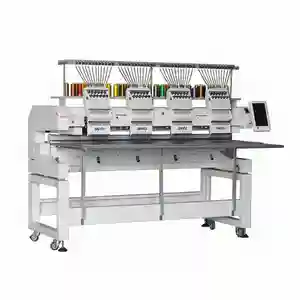
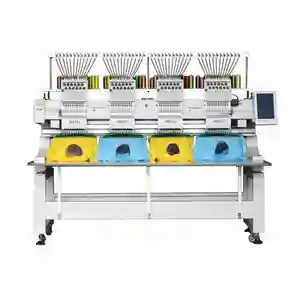




JCM-1204 4 Head Jinyu Computerized Tubular Embroidery Machine T Shirt and Flat Maya Embroidery Machine 9/12/15 Colors






New Design Widely Used Large Embroidery Machine Maya Three Heads Maya Embroidery Machine






Embro Ninjas Digital Maya Multi Needle Embroidery Machine SWF 15 Needle Mini Computerized 15-Bearing Operation Used Condition






Commercial Widely Used Janome Embroidery Machine Machine Embroidery Maya Embroidery Machine






High Quality Computerized Hat Flat T-shirt Embroidery Machine With 2 Heads of Honrain Embroidery
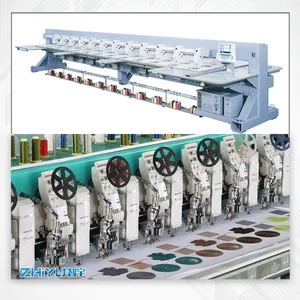
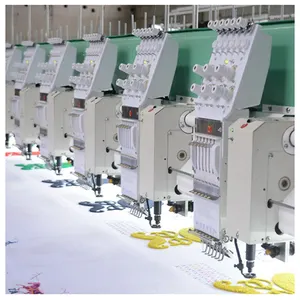
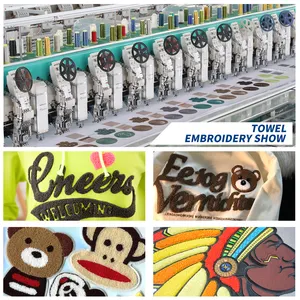



612 Towel Embroidery Machine Computer Embroidery Machine Price Sewing Machine Embroidery






Control Panel Dahao 8-Head Adult Clothing Embroidery 1508 Big Area 8 Head Cap Embroidery Machine With Shipping to Botswana Usd






Cheap Price 4 Heads Embroidery Cord Monogram Embroidery Machine Computerized 12 15 Multi-needle Hat Embroidery for Sale




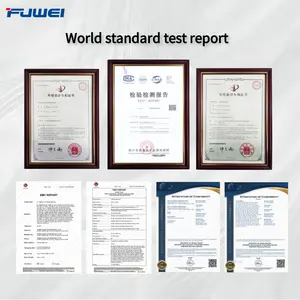
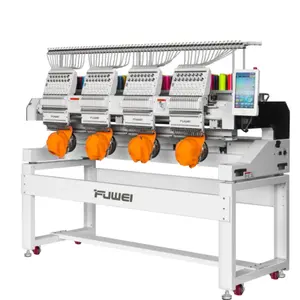
Hot Sale!! FUWEI Bordadora 4 6 Head Dahao Computer Embroidery Machine Computerized Price for c ap Tshirt Hat Embroidery






SIV Automatic Single Head Computerized Cap Flat Embroidery Machine New and Used Condition for T-Shirt Embroidery






Single Head Home-Based Textile Embroidery Machine New Condition Quilting Machine With Core Motor for T-shirt Embroidery






TOP MAYA 2 Heads Embroidery Machine/embroidery Making Machine/ Computer Embroidery Machine






Yonthin China Cheap Computerized 12 Head Maya Embroidery Sewing Machine Prices Sale in Pakistan






Maya Computer Embroidery Sequence Machine for Long Designs of Garments






LEJIA Sewing Embroidery Maya Embroidery Machine Chain Stitch Embroidery Machine






Maya Computerized Brother Textile Sewing for Scarves Hot Sell Flat Embroidery Machine






Promotion Cording Flat Maya Embroidery Machine Computerize Maquina De Bordados






DDP to All Countries 3 Heads Computer Embroidery Machine Fortever Maya Tajima Brother 15 Needle Embroidery Machine Price






YUNFU Maya Multifunction Used 4 Heads Embroidery Machine Computerized Loe Price for t Shirt Hat Flat






QHM Single Heads Computerized Embroidery Machine Is As Good As Maya Embroidery Machine






Embro Ninjas 1-Head HSW 5G 12/15 Needle Cap New Computerized Embroidery Machine Bordadora Maya 1 Cabezal for Small Businesses

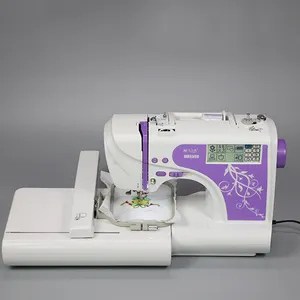

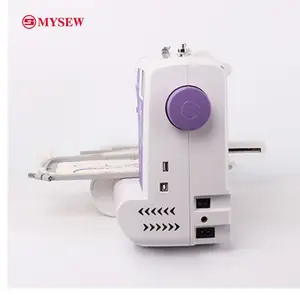


Mysew 500 Home Computer Embroidery Machine Computer Mini Small Household Embroidery and Sewing Machine






Factory Directly Wholesale Price Computerized Monogram 6 8 Heads Embroidery Machines 12 15 Needles for Cap Shirt Flat Embroidery






SIV Wholesale Computerized Embroidery Machine Single Head Cap Hat Embroidery Automatic with New Motor for Embroidery Design






TOP MAYA 12/15 Needle 2 Heads High Speed 1200spm Embroidery Machine/embroidery Making Machine/ Computer Embroidery Machine
Top categories
About maya embroidery
Types of Maya Embroidery
Maya embroidery is a traditional form of embroidery that is usually made by hand. The pattern of Maya embroidery is very distinctive, which is closely related to the spiritual beliefs of the ancient Mayans. Normally, the Maya embroidery pattern includes elements such as flowers, birds, animals, and geometric figures. Maya embroidery is a unique embroidery style, making it a popular choice for those looking for beautiful and culturally significant textiles.
Maya embroidery features a unique combination of colors and stitches, which distinguishes it from other types of embroidery. The traditional stitches used in Maya embroidery are simple but beautiful, such as running stitch and satin stitch. However, in contemporary Maya embroidery, artisans may also use other stitches to enrich the design.
Maya embroidery is usually applied to various textiles, such as clothing, bags, and home decorations. In recent years, with the development of technology, machine embroidery inspired by the Maya embroidery style has become more and more popular, as it can be mass-produced and provides a more cost-effective option for commercial use.
Three-dimensional embroidery machines can be classified into different types based on their working mechanisms and functions.
- Single-head Maya embroidery machines: These machines have a single embroidery head and are suitable for small-scale production or customization. They are ideal for small businesses, home-based businesses, or hobbyists. Multi-head Maya embroidery machines: These machines have multiple embroidery heads, which allows them to embroider multiple designs simultaneously or to increase production efficiency. Multi-head machines are typically used in commercial settings where high-volume production is required.
- Flat embroidery machines: Flat embroidery machines are designed to embroider on flat or planar surfaces, such as fabric panels, apparel, or home textiles. They are suitable for businesses operating in the garment, home decor, or textile industries.
- Cap and hat embroidery machines: These specialized machines are specifically designed to embroider on caps, hats, or other headwear. They often have a cylindrical or tubular embroidery area that can accommodate the unique shape of hats. Cap and hat embroidery machines are commonly used in the fashion, sports, or promotional industries.
- Specialty embroidery machines: Specialty embroidery machines refer to those that are designed for specific applications or that have unique features, such as chenille embroidery, sequin embroidery, or quilting embroidery. These machines may offer different embellishment techniques or functions to meet diverse business needs.
In addition to the above types, there are also portable embroidery machines that are compact and lightweight for easy transport. They are suitable for on-the-go embroidery projects or for businesses that require flexibility in their embroidery operations.
Specification and maintenance of Maya embroidery
The specifications of Maya embroidery depend on the type of machine and its model. Here are some specifications of Maya embroidery machines with their maintenance needs.
- Machine type
It is important to identify the types of Maya embroidery machines, including multi-head machines, single-head machines, and other types. Multi-head machines have multiple sewing heads and can perform multiple embroidery tasks simultaneously. Single-head machines, on the other hand, have only one sewing head and are suitable for smaller-scale embroidery projects. Other machines, such as flat and tubular machines, are suitable for different types of fabrics.
- Machine head
Regardless of the type of Maya embroidery machine, the machine head is one of its key components. When using the embroidery machine, it is important to ensure that the machine head moves smoothly and accurately. Regular cleaning and lubrication of the machine head are required to maintain proper maintenance, which can help prevent build-up of dirt and debris and ensure optimal performance.
- Embroidery area and speed
The embroidery area and speed of the Maya embroidery machine are also key specifications. These determine the maximum area that the machine can embroider in a single operation and the speed at which it can sew. It is important to pay attention to the machine's embroidery area and speed limits to ensure high-quality results and avoid damaging the machine. In addition, regular maintenance of the embroidery machine, including the motion system and transmission components, is required. This can help ensure precise stitching and consistent speed performance.
- Thread capacity
The thread capacity of the Maya embroidery machine refers to the number of threads that can be used simultaneously for embroidery. It is important to properly maintain the embroidery machine's thread path and tensioning system to ensure proper use. Threading and trimming mechanisms should be cleaned regularly to prevent thread build-up and ensure smooth operation. Also, the tension of the thread should be adjusted according to the fabric and design being embroidered, which can help achieve the best embroidery effect.
- Frame options
The frame options of Maya embroidery machines refer to the types and sizes of embroidery frames that can be used with the machine. Different frames are suitable for different fabrics and embroidery techniques, and the frames' maintenance is also important. It is necessary to check the frame for damage or wear and clean it regularly to ensure a clean working surface. In addition, the frame should be securely attached to the fabric during embroidery, and the proper clamping pressure should be adjusted to avoid distortion of the fabric.
Scenarios
Maya embroidery machines are widely used in various industries and fields for embroidery and pattern making. Here are some typical application scenarios.
Clothing and Apparel Industry
Maya embroidery machines are widely used in the clothing and apparel industry for stitching intricate designs, logos, and patterns on garments such as T-shirts, dresses, hats, and jackets. These machines can help achieve unique and personalized embroidery effects, enhancing the aesthetic appeal of fashion products.
Home Textiles and Decor
In the field of home textiles and decoration, Maya embroidery machines can be used to embroider exquisite patterns on items such as curtains, pillowcases, tablecloths, and bedspreads. These embroidered home textiles can add a touch of elegance and sophistication to living spaces.
Advertising and Promotion
Maya embroidery machines are also widely used in the advertising and promotional industry. They can be used to embroider logos, slogans, or promotional messages on items such as hats, bags, and banners. These embroidered products can help enhance brand awareness and promote marketing campaigns.
Automotive and Aviation Upholstery
Maya embroidery machines are often used in the automotive and aviation industries for upholstery and interior decoration. They can embroider intricate patterns on car seats, headrests, and interior panels. These embroidered details can enhance the overall luxury and aesthetics of the vehicle's interior.
Gifts and Souvenirs
Maya embroidery machines are also widely used in the production of gifts and souvenirs. They can be used to embroider personalized designs or messages on items such as keychains, patches, and embroidered badges. These embroidered gifts are unique and memorable, making them ideal for special occasions or promotional events.
Medical and Healthcare Industry
In the medical and healthcare industry, Maya embroidery machines can be used to embroider logos or names on uniforms, scrubs, or other garments worn by medical staff. The embroidered designs can help distinguish different departments or enhance the professionalism of the medical institution.
Sports and Leisure Industry
Maya embroidery machines are also widely used in the sports and leisure industry. They can be used to embroider team logos, player names, or numbers on sportswear such as jerseys, caps, and jackets. The embroidered designs can enhance team cohesion and create a sense of identity.
How to Choose Maya Embroidery Machines
When exploring the Maya embroidery machine for sale, buyers need to analyze their business needs to get the right machine for their operations. Consider the scale of the embroidery work that the machine will be handling. Pick a machine that has the right embroidery area for the projects at hand. If the projects are large-scale, it is more practical to go for a machine with a larger embroidery area.
Think about the type of material the machine will be working with. It is important to get a machine that can handle the specific material in terms of thickness, texture, and construction. If the machine will be running all day, every day, it is crucial to get a machine that will be able to cope with constant use. Such machines are designed to be more durable and robust. However, when choosing the machine, it is important to assess the design and its complexity. In some cases, the material may be too thick or complex for the heavy-duty machine. In such a situation, look for a machine that can work with the material and still handle it. A machine that is very complex to operate can slow down the production process. It is best to get a machine that is not only suitable for the project but also easy to use.
Consider the software compatibility of the machine. It is crucial to ensure that the machine's software is compatible with the design file formats used. Also, look at the machine's additional features and accessories. Such features, including automatic thread trimming and color changing, can improve efficiency and productivity. Some added accessories may also be required, such as different types of hoops, to customize the machine for specific needs. Finally, consider the budget. Maya embroidery machines come at different prices that vary depending on the size, model, and features. It is important to set a budget and look for a machine that meets business requirements and falls within the set budget.
Q&A
Q1: What are some of the industry trends affecting the embroidery machine market?
A1: Industrial embroidery machines are becoming more efficient, with many now having the capacity for multiple jobs and tasks. The move towards digital embroidery machines has also seen many embroidery machines being connected to the internet.
Q2: What are the significant embroidery machine industrial applications?
A2: Industrial embroidery machines are used in various industries. In the textile and fashion industry, they are used to create logos, monograms, and other decorative designs on garments. In the automotive industry, they are used to make seat covers and door panels. In the medical industry, they are used to create sutures and repair damaged tissues.
Q3: What is the difference between an industrial and commercial embroidery machine?
A3: The main difference is that industrial machines are built to withstand and work with higher volumes and longer hours. Industrial machines usually have a more robust frame and construction to ensure they last longer. They are also designed to work with more challenging materials and different types of fabrics. Industrial machines usually have a more powerful motor and can produce a higher stitch per minute count. They also support larger hoops, which allow for larger designs. Industrial machines also have more heads and needles compared to commercial machines.









